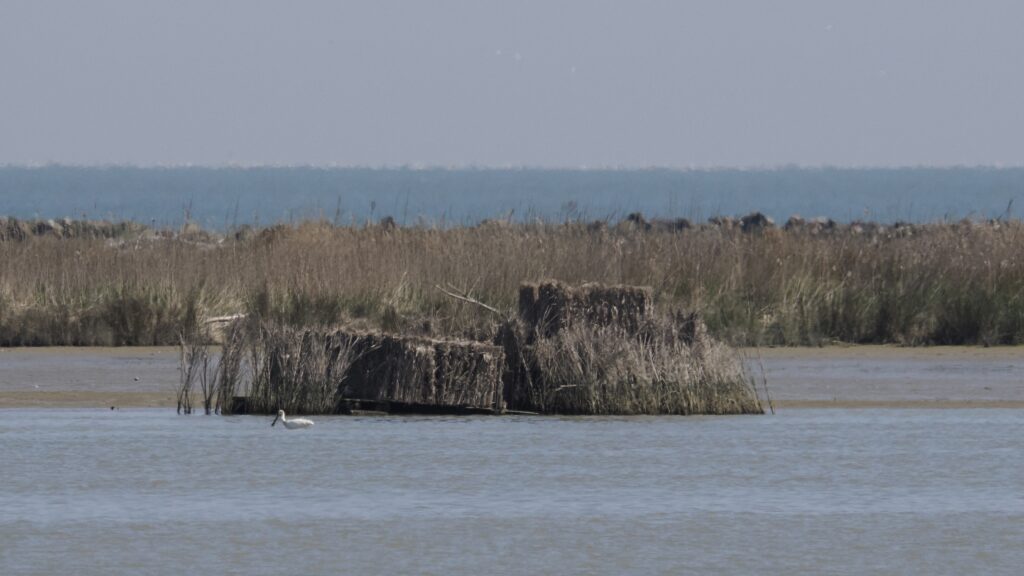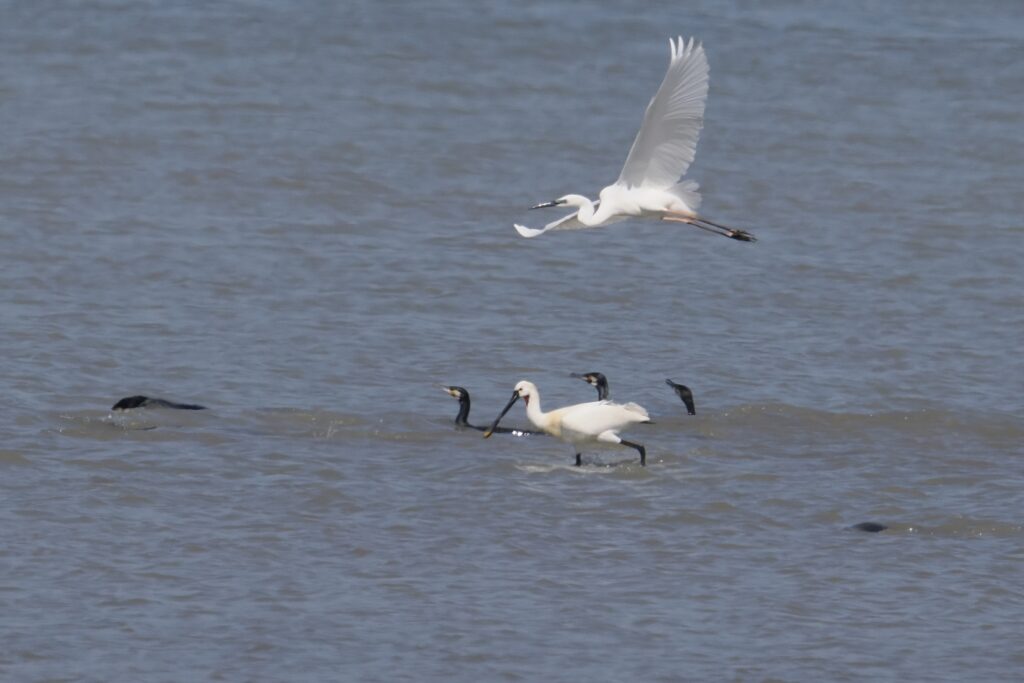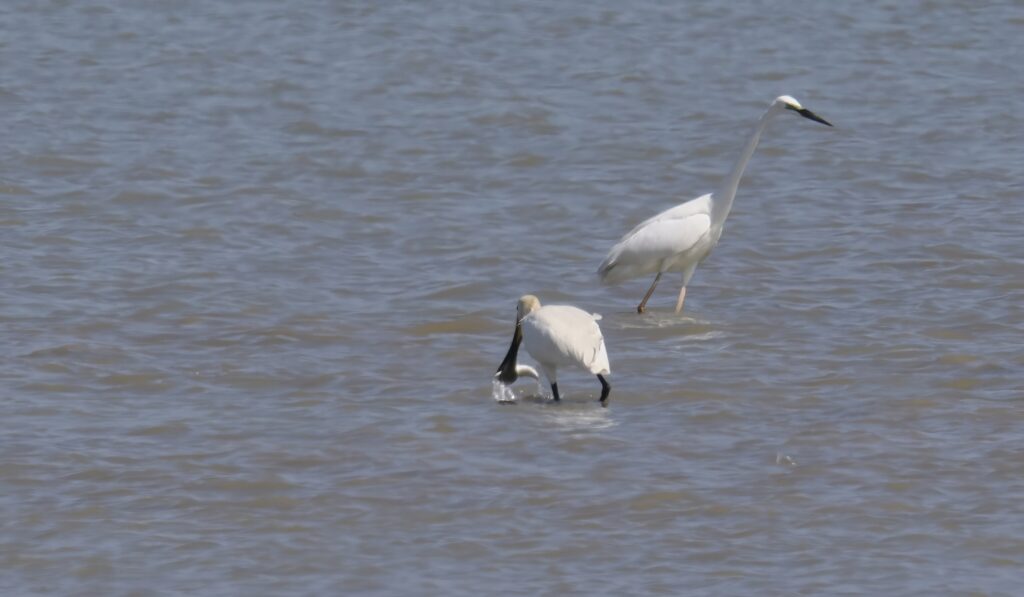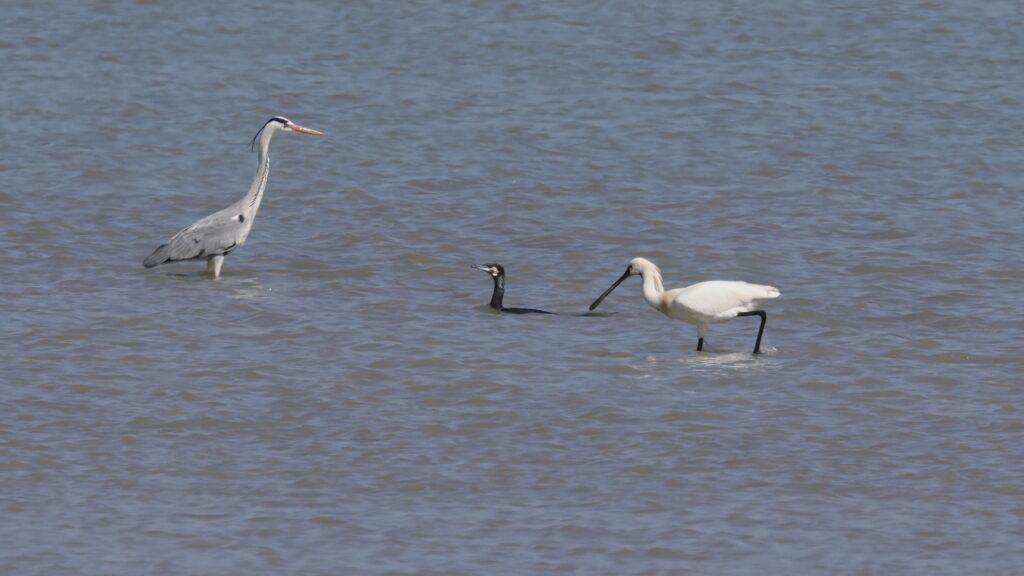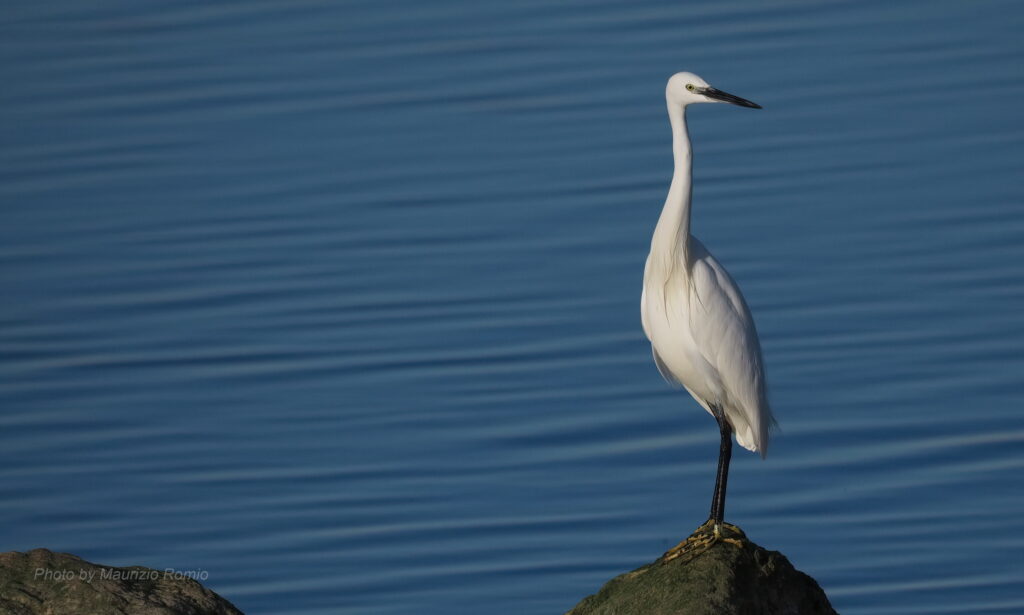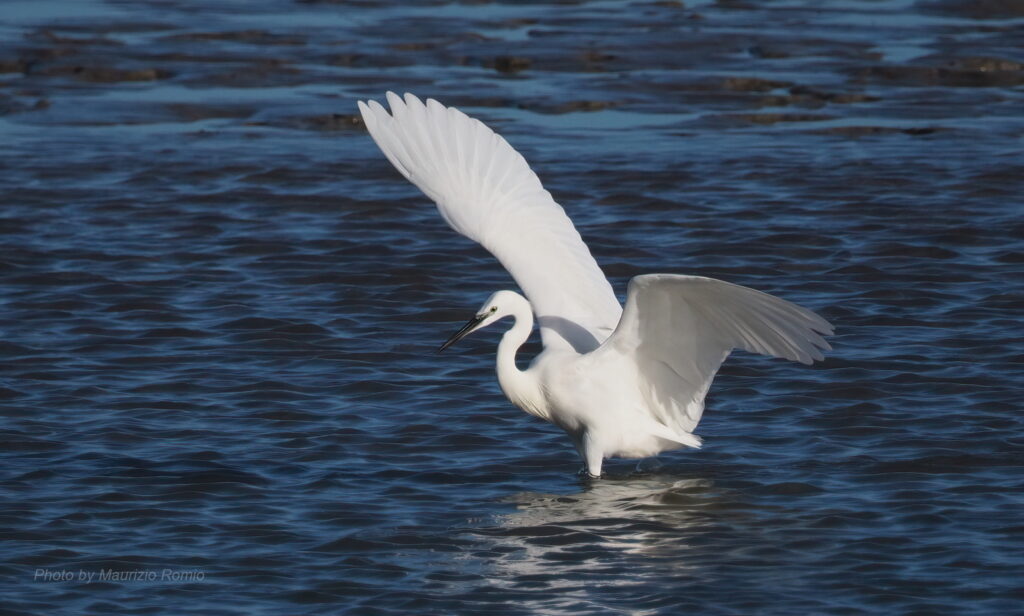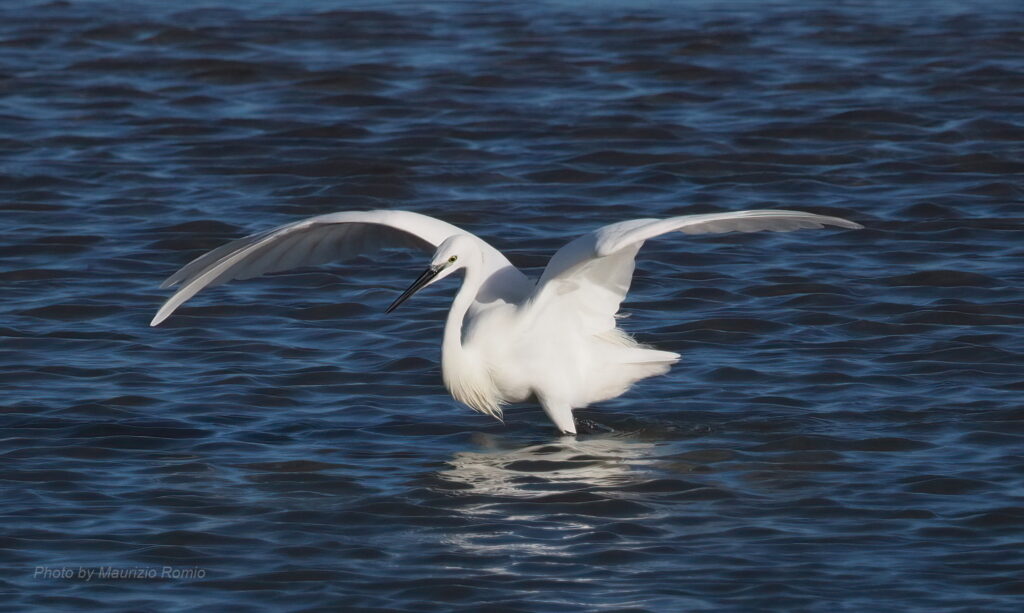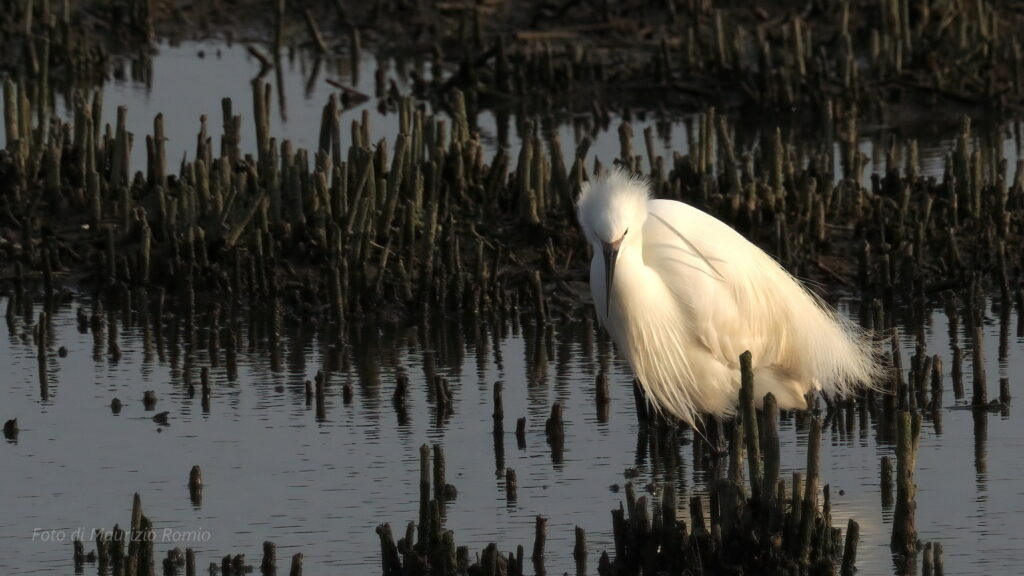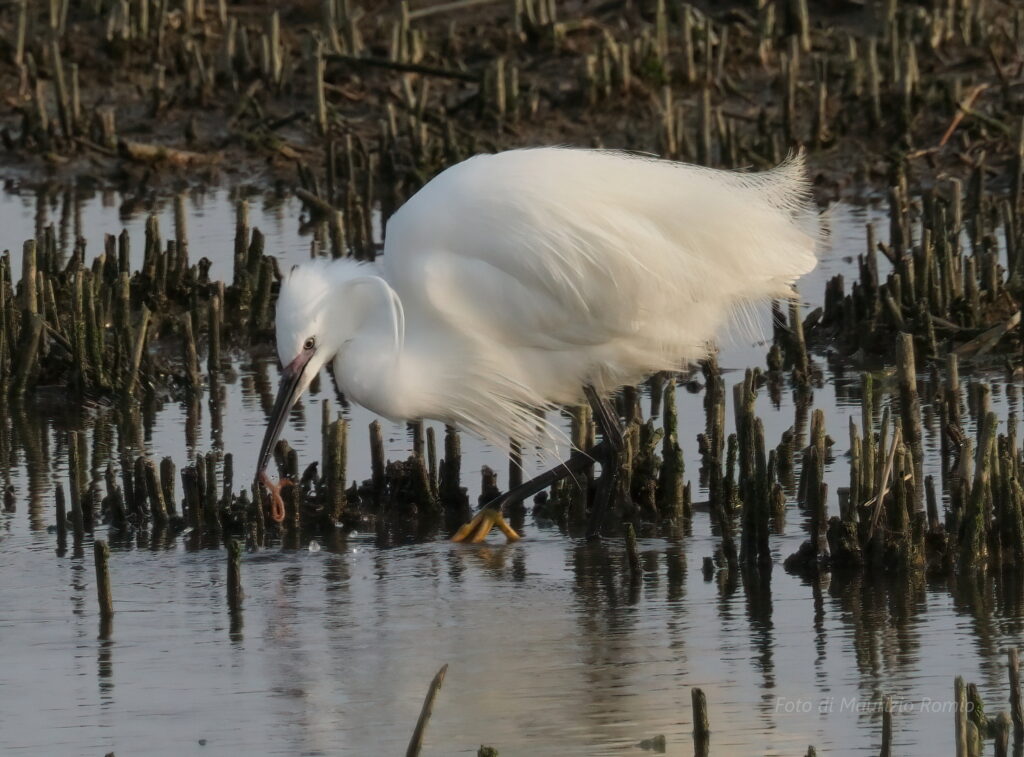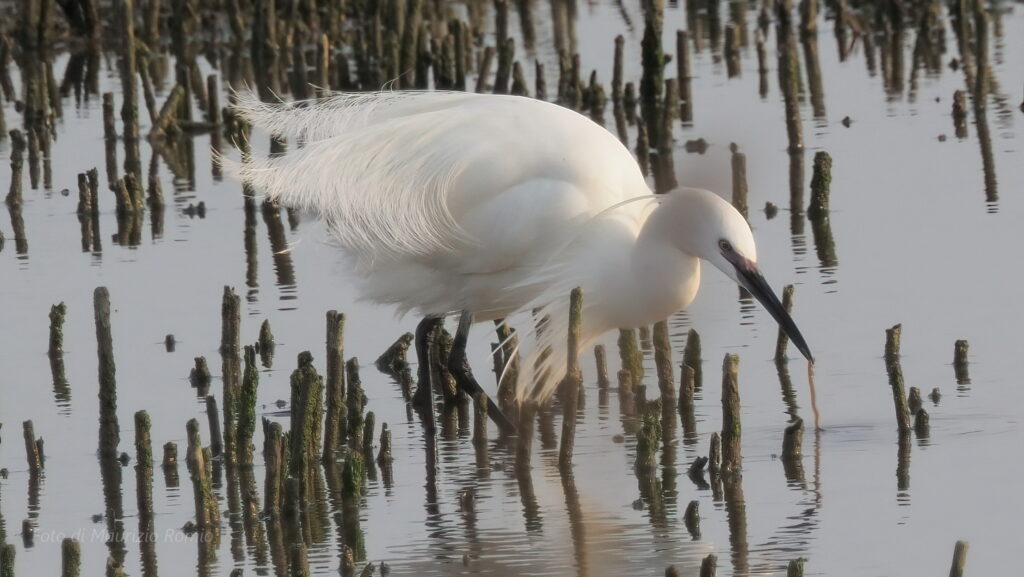WHITE SPOONBILL IS FISHING
(Leggi questo post in Italiano)
Luca is observing with his telescope the birdlife present at that moment in the stretch of water in front of us when, with happy surprise, he spots a white spoonbill, scientific name Platalea leucorodia, in the distance next to a hunter’s hut, intent on probing the marshy bottom with its beak.
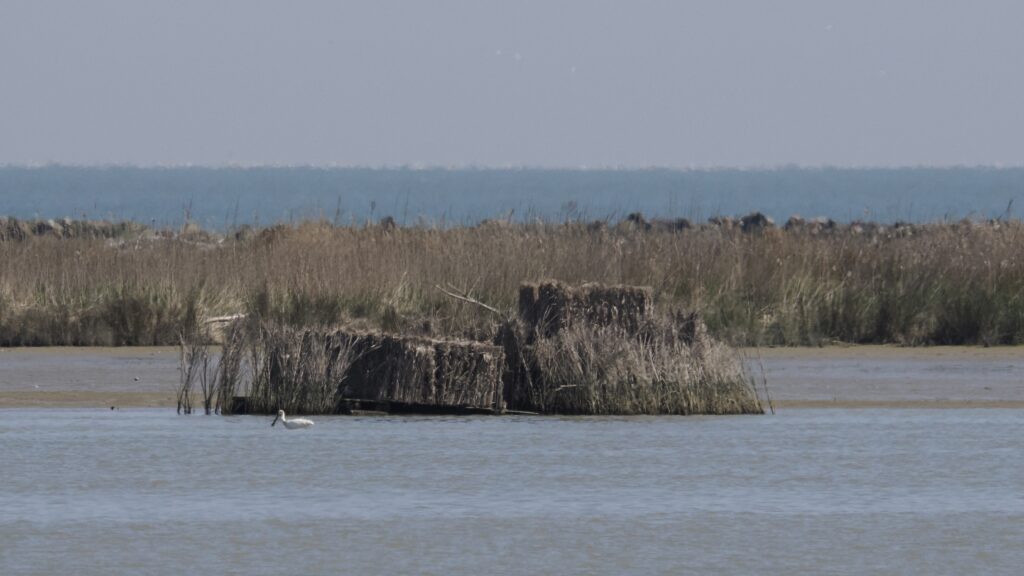
The scientific name “Platalea leucorodia” is derived from the Greek word “platýs”, meaning “wide and flat”, referring to the characteristics of its beak; “Leucorodia” is derived from the Greek word “leukorhøidiós”, meaning “white heron”, and this is because the two birds, with the exception of their beaks, have similarities, as can be seen in the photo below showing them together.
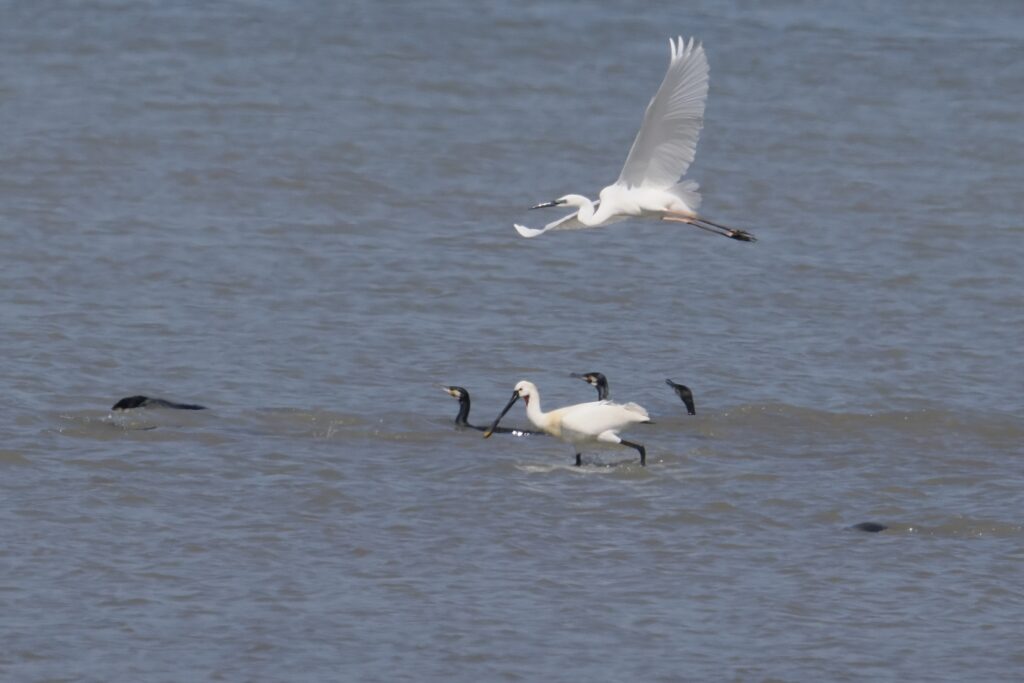
Luca and I confidently wait for the white spoonbill to come a little closer to us so that we can take some photos of it.
WHITE SPOONBILL WITH A NEWLY CATCHED FISH IN ITS MOUTH – FISHING TECHNIQUE
The spoonbill continues to fish during our wait.
Filmed in the video, it shows his fishing technique.
Moving swiftly, the spoonbill scans the water and the bottom with the flat, wide end of its beak held slightly open in order to sense the presence of fish immediately ready to grab its prey the moment it senses their presence.
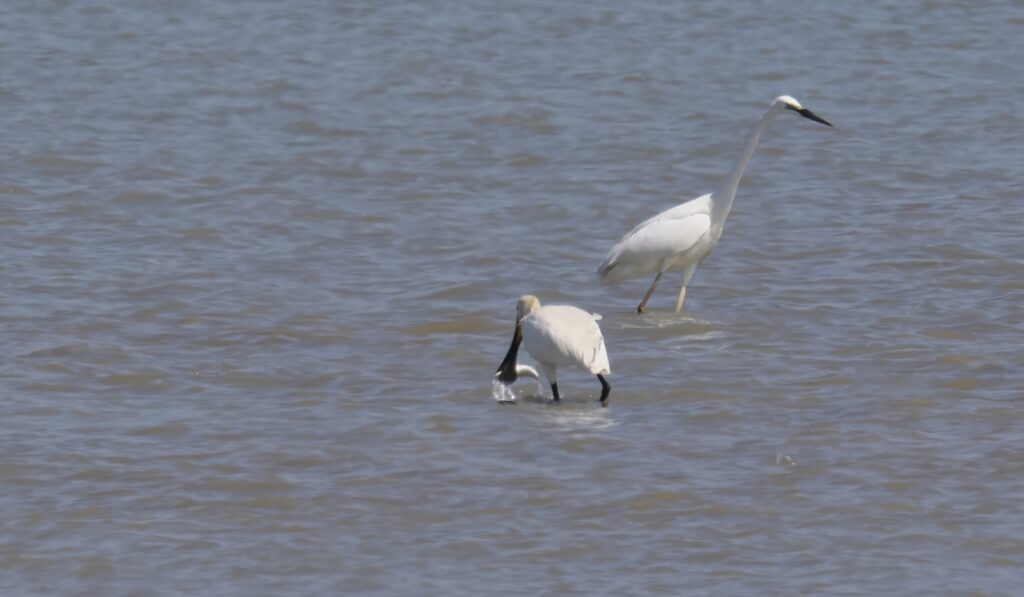
THE OPPORTUNISTS
The spoonbill feeds mainly on molluscs, amphibians and small fish.
In the photo, it is seen next to two other experienced fishing birds, the cormorant and the grey heron.
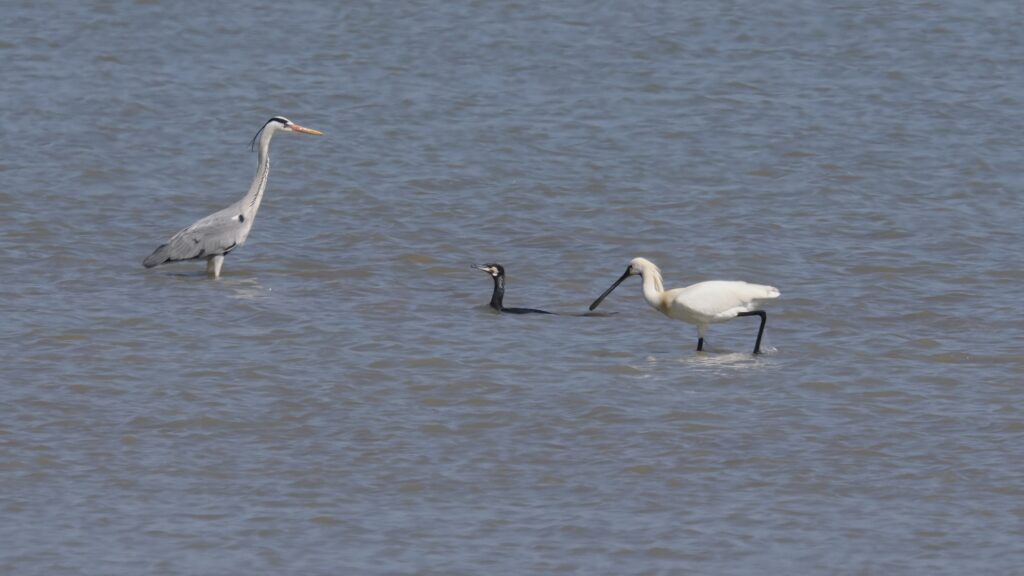
In this particular case, the latter are somewhat opportunistic in that they are taking advantage of the white spoonbill’s fishing technique in order to catch a few fish themselves, an example of “animal opportunism”, with which humans are also well endowed.
Note: Photo and video by Maurizio Romio. For the realisation of the published photographs and video footage, I used an OM SYSTEM OM-1 MARK II as camera body and the OM System M.Zuiko ED 150-600mm f/5.0-6.3 IS Sync telephoto lens as lens. Shooting location: Sacca degli Scardovari – Po Delta – 05/04/2025

